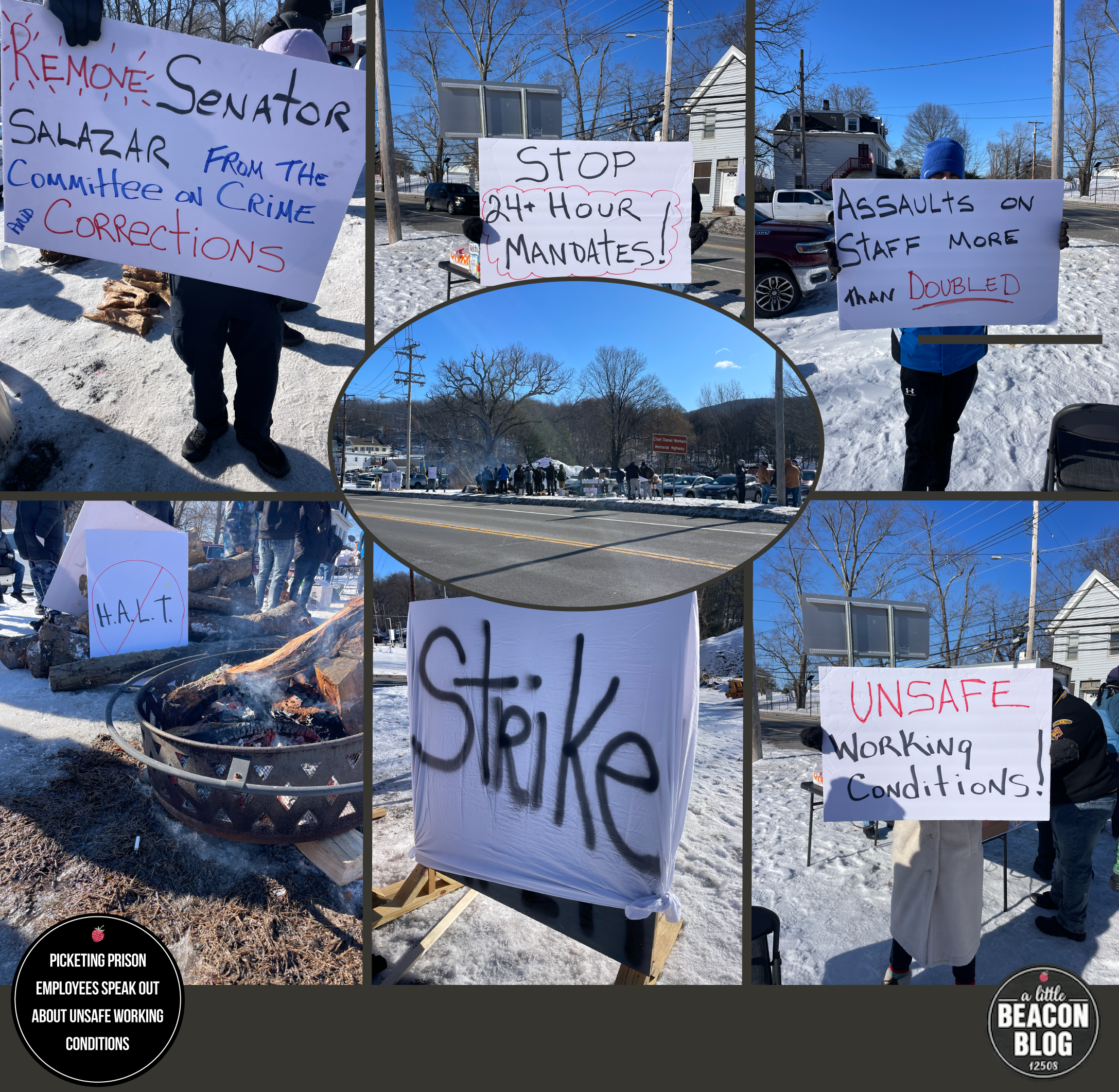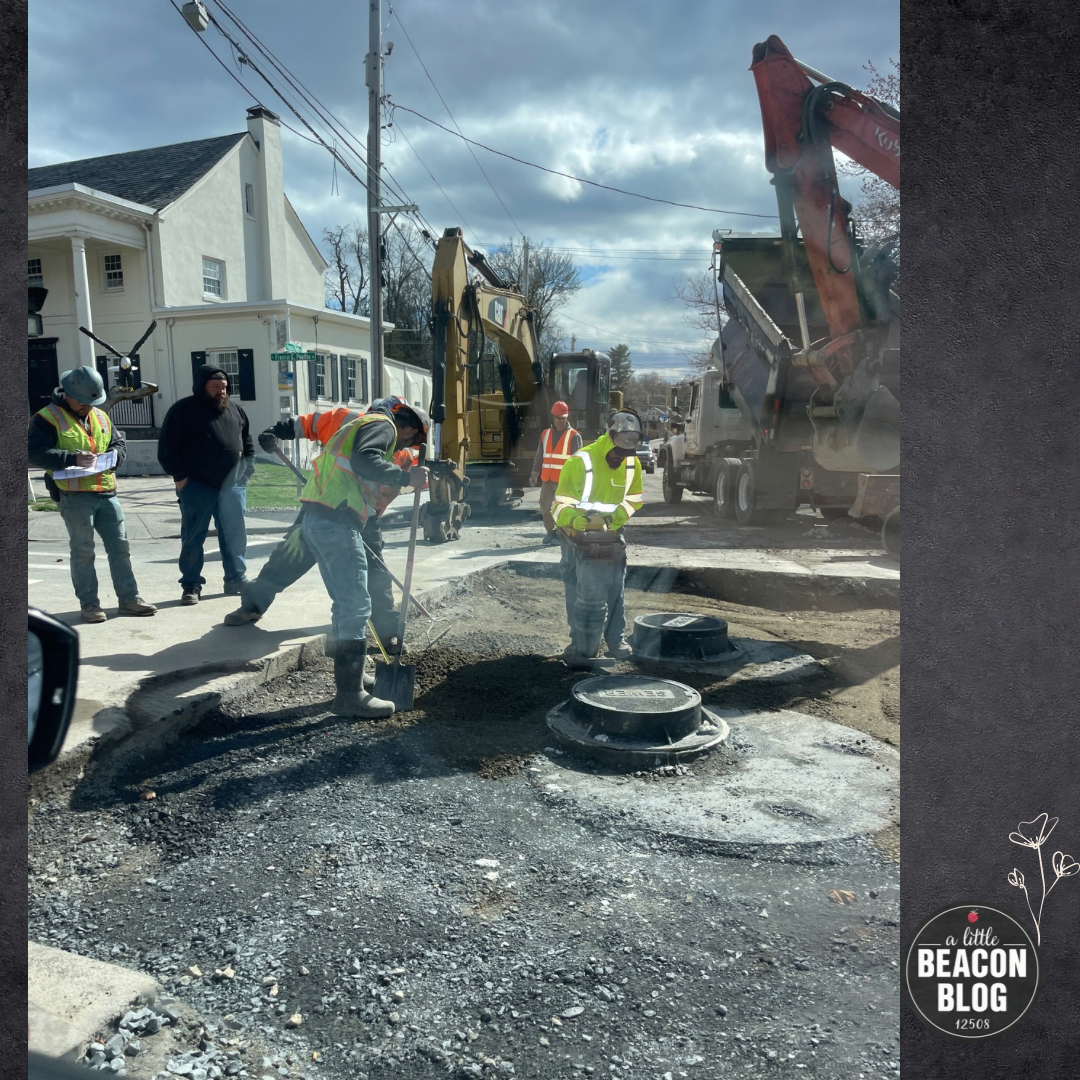Picketing Prison Employees Demand A Stop To Mandated 24hr Shifts, Fentanyl Exposure and More
/Picketing prison employees demonstrated on Rte. 52 in Beacon, NY in the early morning of Tuesday 2/18/2025 across from the Fishkill Correctional Facility entrance. Around 20-30 employees participated, who were joined by retirees who were there to support and speak to members of the media. Most employees were masked and did not want to be identified, to protect themselves against retaliation from their union.
Corrections Officers were protesting several safety issues, including:
Corrections Officers are demanding the repeal of the H.A.L.T. Act, which was a bill signed into law to create more humane and therapeutic ways of responding to inmates. Corrections Officers refer to confinement as “Jail within the jail” and punishment based, whereas bill signers may have sought a rehabilitation approach.
Mandated 24hr shifts
Mandated Overtime
Exposure to fentanyl through mail sorting methods
Repeal of H.A.L.T. Act. According to the bill: “This bill will be known as the "Humane Alternatives to Long-Term Solitary Confinement" Act (the H.A.L.T. Solitary Confinement Act.) This bill would limit the time an inmate can spend in segregated confinement, end the segregated confinement of vulnerable people, restrict the criteria that can result in such confinement, improve conditions of confinement, and create more humane and effective alternatives to such confinement.” The bill also makes it illegal to use special or modified food diet as a punishment. Corrections officers are saying they have lost the ability to “punish” inmates for violence to other inmates of officers, or drug use. Violence to both inmates and officers is on the rise, according a breakdown presented by Spectrum News.
A sign spray painted with the word “STRIKE” was erected at 9:30am, about an hour into the picket on Tuesday morning.
Since their demonstration, and while corrections officers throughout the state went on strike for these demands, Governor Kathy Hochul called up the National Guard to “protect striking corrections officers and communities,” as reported by MidHudson News. The Governor demanded that “the illegal and unlawful actions being taken by a number of correction officers must end immediately,” according to the newspaper.
While the gathering was initially called a “picket,” a sign spray painted with the word “STRIKE” emerged at around 9:30am. It could not be confirmed or denied if any demonstrating employees were striking, or if they were not on shift today.
Demand: End Mandatory 24hr Shifts
Retired correctional officers who spoke to A Little Beacon Blog stood with a sign saying “Retirees Stand With CO (Correctional Officers): FCF Strong” and said they were there to get the word out about “how unsafe the working conditions are for the officers in Fishkill Correctional and state-wide.”
Unsafe conditions include “officers being told they have to work 24 plus hours, having to stay awake that long with a house full of people that aren’t so nice,” retiree Rob Johnson told ALBB.
Demand: End Mandatory Overtime
Mandatory overtime is another issue corrections officers are refusing. Said one retiree to ALBB: “It’s one thing if you wanted to stay in overtime. But some guys are getting hit with 80-100 hours overtime every two weeks. My one friend had over 3,000 hours overtime in one year. He did a double every day for almost a year.”
The retirees also described corrections officers who drive inmates in vans. “Trip officers can do 30 plus hours driving in a van. Armed. Sometimes two guys, with sometimes 4-6 inmates in a van too. How safe is that?”
Demand: Lunch Breaks
“There are no lunch breaks,” Rob told ALBB. “You can’t get a relief to get off the door. You bring your meals and hope you get time to eat.”
Last Week’s Walk-Out At Collins and Elmira Corrections Facilities
A strike began yesterday on President’s Day when several employees at the state prisons in Collins and Elmira walked out, prompting a cancellation of visitation, the New York Post reported. Striking is illegal in New York State “and could lead to severe consequences for individuals and unions that participate in them,” the newspaper reported.
But when alleged “uprising inmates” injured three guards while employees were vocalizing about understaffing issues and mandatory overtime, and when a agency memo circulated talking about more reductions in staff, the employees in Collins and Elmira walked out last week, the New York Post reported.
The Department of Corrections and Community Supervision spokesman Thomas Mailey issued a statement: “The job actions initiated by some rogue NYSCOPBA [NYS Correctional Officers and Police Benevolent Association] members at Collins and Elmira Correctional Facilities this morning are illegal and unlawful,” he said “The staff that have gathered outside of both facilities, and who refused to enter the facility for their respective shifts, was not in any way sanctioned by NYSCOPBA,” the union said in a statement.
Demand: Change Mail Sorting Methods and Raise Awareness About Fentanyl Exposure To Corrections Officers
The retirees told ALBB of the continued exposure to fentanyl that corrections officers face when doing activities like sorting mail intended for inmates, and frisking them. “People from the outside are sending in envelopes laced with fentanyl,” one retiree told ALBB. “They liquefy the fentanyl and the put it on the glue of the envelope, or the glue of the stamp. This is intended for the inmate to get high. But corrections officers are coming into contact with it when they touch the envelopes, and some have needed Narcan treatment.” These envelopes are usually placed inside of an envelopes that goes through the USPS.
Employment and Assault Issues Across The State
Spectrum News has done a breakdown of both employment numbers compared to the number of incarcerated people - both of which are declining in New York State. The news agency also did a breakdown of the number of assaults on corrections officers, as well as on inmates. Both of which are rising.
Corrections officers are demanding more staff. But recruiting staff may be difficult. Said one former inmate, Ryan Manzi, to ALBB: “Those protesters I’m sure are being slaved working within the prison, however, they knew about mandated overtime, including when there’s a state of emergency due to snow. Under-staffing is a universal problem in the criminal justice system.”
Ryan felt that there is an “old guard” in charge, where potential younger correctional officers are more informed and either not choosing the profession, or resisting it from inside. “They have championed basic human rights and it’s clear that the old regime and the youth mindset don’t mesh well.”
Ryan continued: “The working conditions are poor in a lot of these facilities, even newer ones, and to some I’ve personally interacted with, the risk/reward of the job truly isn’t worth their mental health, physical health and safety.”
Demand: Repeal the H.A.L.T. Program To End It
The corrections officers are demanding the end of the H.A.L.T. (Humane Alternatives to Long-Term Solitary Confinement), saying they and other inmates are at risk.
“There’s no punishment inside the jail anymore,” Rob told ALBB, as he described how officers would punish inmates. “There used to be the Keyblock area. It’s like a little jail inside the jail. If you do bad, you got to go to jail, basically. That’s been almost squashed. They can’t do more than 14 days in that. It’s not unsafe. There are windows and doors. It’s not a little box that anybody’s in. It’s a miscommunication with all that stuff. The H.A.L.T Program needs to be repealed. It makes it so unsafe. The officers are getting assaulted on a daily basis as well as being made to stay awake for 24 plus hours.”
Ray, a retired corrections officer, also spoke to ALBB about his views of H.A.L.T. and why he views a method of punishment necessary for acts of violence or drug use while inside the jail. He said: “The H.A.L.T Act was instituted to basically take away any punishment and reduce what they used to call Keyblock Solitary Confinement for disciplinary actions. It used to be where there was penalties and disciplin and consequences for poor behavior, violence, drug use, and now basically, it’s a slap on the hand. They can’t do any more than 15 days in confinement. It’s like ‘Time Out’ for bad guys. So an officer can get assaulted, beat. Inmates acan be beat and assaulted. Inmates can be high. And there’s no repercussions for poor behavior and disciplinary action. we have no control over that any longer. If there are no repercussions, then there is no reason not to misbehave. There needs to be repercussions for misbehavior. It’s jail. It’s prison. They’re not in there for being good citizens. If you can’t behave in jail and there not be repercussions for misbehavior, what’s going to stop all the violence and misbehavior. People are being assaulted on a daily basis across the state, in every jail.”














































